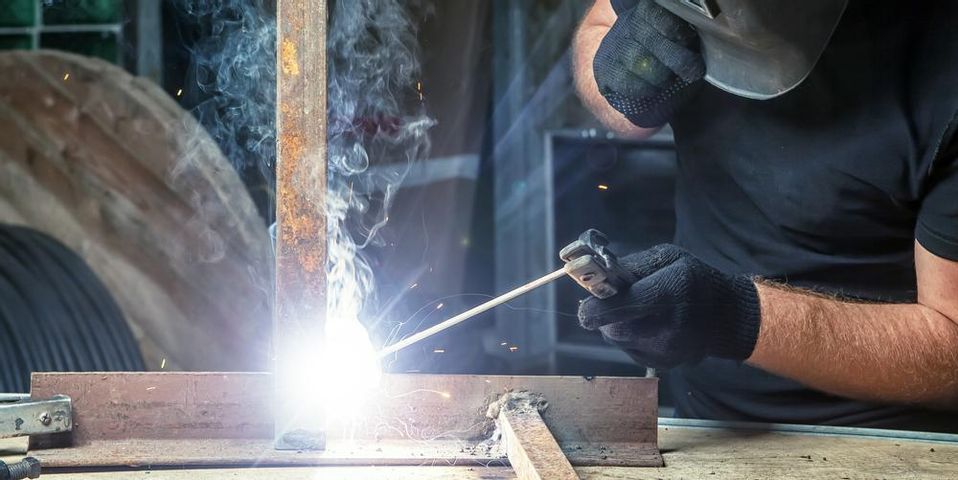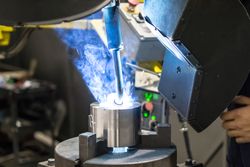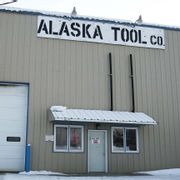
For as long as mankind has been working with metals, they have also been welding. While today’s techniques have come a long way from the forging used by blacksmiths, the same basic principles apply: two pieces of metal are combined to form one. Below are some of the most common methods used by welders today.
4 Popular Welding Types
1. Shielded Metal Arc (SMAW)
Otherwise known as stick welding, this is one of the simpler processes. It involves using an electrical conductor known as an electrode covered in flux—a combination of carbonate and silicate materials that will later produce a shielding gas and slag layer to protect the weld from atmospheric gases. To join the metals, this process requires a constant current to produce an electrical arc between the electrode and metals, causing them to melt into a molten pool. Once this weld pool cools, it will form a joint, and the flux will disintegrate to form a shield against contamination and oxidation.
2. Gas Metal Arc (GMAW)
Although it was originally developed for welding aluminum and other non-ferrous materials, GMAW offered such a fast welding process it is also used to join a range of solid carbon steel and tubular, metal-cored electrodes. It joins metals by heating them with an electric arc between a continuously fed wire electrode and the pieces. The shielding gas is supplied by the welding gun to protect the molten weld pool.
3. Flux Cored Arc (FCAW)
 Although similar to GMAW, flux cored arc welding does differ in one aspect: It relies on a different method for shielding the electrode from the air. In this technique, a hollow wire with a flux in the center is used. This allows the welder to work outside under windy conditions without any worry of the shielding gas dissipating.
Although similar to GMAW, flux cored arc welding does differ in one aspect: It relies on a different method for shielding the electrode from the air. In this technique, a hollow wire with a flux in the center is used. This allows the welder to work outside under windy conditions without any worry of the shielding gas dissipating.
4. Gas Tungsten Arc (GTAW)
Compared to most welding techniques, GTAW is one of the most challenging methods to master. However, for the adept, it is the preferred methods for welding narrow sections of stainless steel and non-ferrous metals. It uses an electric arc but also a tungsten electrode that is shielded by inert gases like argon or helium. Unlike the other forms on this list, GTAW does not produce slag, which means there is no worry about chips.
At Alaska Tool Company, their welders are trained in all of these welding techniques and many others to produce fabrications that precisely meet their clients’ needs. For over 40 years, this machine shop has been repairing and building parts for all of the Fairbanks, AK, region. To find out how they can assist you, call them today at (907) 479-5354, or visit their website to learn more about their services.
About the Business
Have a question? Ask the experts!
Send your question

